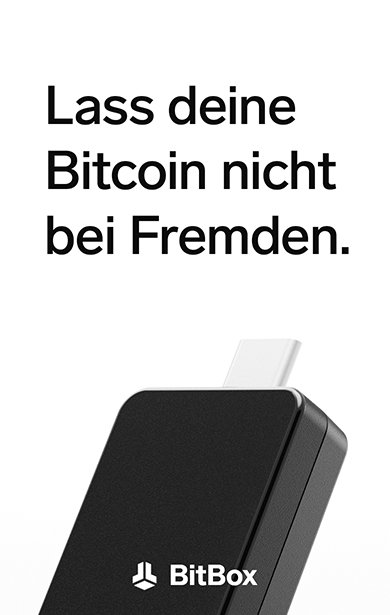Bitcoin: The wind is changing
Positive news situation
After the Bitcoin price recorded its worst month since the FTX collapse in April and even slipped below USD 57,000 on May 1, the wind has changed again. The news situation surrounding the asset has improved again and ETF inflows are picking up significantly. The price has recovered by more than 10 percent and BTC is trading above the USD 63,000 mark again.
Bitcoin ETFs in demand again
The sell-off on May 1 was accompanied by by far the worst day for the US Bitcoin spot ETFs approved at the beginning of the year. The outflows of over USD 560 million across the eleven investment products were a new negative record. This was helped by the fact that BlackRock's ETF ($IBIT) recorded outflows for the first time after the exchange-traded fund of the world's largest asset manager ended its record-breaking inflow streak just a few days earlier. In general, Wednesday last week was also the first day on which none of the eleven Bitcoin ETFs were able to absorb capital.
But just two days later, there was almost the same news with the opposite sign. On May 3, none of the ETFs recorded outflows for the first time. Although the investment products did not set a new record last Friday with combined inflows of almost 380 million US dollars, the trading day did bring with it a special feature.
Grayscale's investment product, $GBTC, which was converted from a closed-end trust into a spot ETF, attracted capital for the first time since the ETF was approved. Previously, the ETF saw funds flow out every trading day, making it the worst ETF ever in this regard. This capital flight was probably due to $GBTC's high fees, which at 1.5 percent are many times higher than those of its direct competitors.
If the flows of $GBTC now stabilize at this level, this will remove a major factor that has caused immense selling pressure in recent weeks and months. With the low-cost Bitcoin mini-ETF, which Grayscale wants to make proportionally exchangeable for $GBTC shares, the asset manager from the crypto sector is also planning to make some concessions to investors on the fee side soon.
Bitcoin ETFs make a strong debut in Hong Kong
Even if the launch of the Bitcoin and Ethereum ETFs on the Hong Kong stock exchange looked like a disappointment at first glance, considerable sums have also flowed into Bitcoin via this channel. Initially, the three Bitcoin spot ETFs from the Chinese Special Administrative Region alone soaked up almost 250 million US dollars.
In view of the expectations of Rebecca Sin from Bloomberg Intelligence, who optimistically forecast USD 300 million in inflows for all six ETFs in the entire first month, the debut can be seen as a success - even if the inflows are almost exclusively attributable to seed investments.
Currently, Hong Kong's Bitcoin and Ethereum ETFs are not accessible to mainland Chinese due to Beijing's anti-crypto stance. Bloomberg experts predict that this could change in the next 10 to 20 years.
However, Richard Byworth of Skyz Capital, an unknown investment firm, started a rumor a few days ago that the People's Republic could soon make the new ETFs accessible to mainland Chinese. Some news sites picked up on this, but it should be emphasized that this is extremely unlikely and is not based on solid evidence or a trustworthy source.
Bitcoin ETFs soon tradable in other regions?
After the Minju Democratic Party won the majority of seats in Korea's parliamentary elections, the approval of Bitcoin ETFs in the republic is moving closer. Among other things, the opposition Minju party campaigned for the approval of Bitcoin spot ETFs. According to local media, the party is already putting its money where its mouth is by calling on regulators to re-examine the fact that Bitcoin spot ETFs are currently not allowed to be traded in Korea.
Bitcoin ETF approval could also be imminent in Australia. A few days ago, people familiar with the matter told the Bloomberg news service that the Australian stock exchange ASX is likely to give the green light to the investment products this year.
With additional approvals of exchange-traded Bitcoin funds, further funds from institutional investors around the world could flow easily and securely into the still young asset class.
Major payment service provider increasingly relies on Bitcoin
The payment service provider Block, which is behind the popular Cash app in the US, announced in its quarterly report that it had launched a Bitcoin savings plan in April. The company, founded and managed by Jack Dorsey, announced that 10 percent of its gross revenue from Bitcoin products would be invested in the asset. In April, this amounted to 4.4 million US dollars. Block has already purchased BTC at the end of 2020 and beginning of 2021 for a total of USD 220 million - an investment that has paid off.
In addition, the payment service provider, which is worth more than 40 billion US dollars, intends to continue to rely heavily on Bitcoin at an operational level and thus drive forward the accessibility, security and usability of Satoshi Nakamoto's creation. This can be seen in the letter to shareholders written by Jack Dorsey - Blocktrainer.de reported.
Interest rate cuts and money printing in prospect
Since the US Federal Reserve signaled at its last meeting on 1 May that it does not intend to raise interest rates and will reduce the current balance sheet reduction of USD 60 billion per month to USD 25 billion from June, the capital markets have become more confident again. The US labor market data reported on 3 May also contributed to this. At 3.9%, the unemployment rate was 10 basis points higher than expected. A weaker labor market suggests that inflation is falling, which would give the US Federal Reserve room to cut interest rates as planned in the election year. At 3.5%, inflation in the USA is still well above the 2% target.
Following developments in recent days, the market is again assuming that the first interest rate cut will take place in September - a week earlier it was still December. Meanwhile, the US dollar money supply in circulation (M2) is picking up speed again. The year-on-year rate of change is positive again for the first time since the end of 2022 - and so far there has not even been a move towards monetary easing by the US Federal Reserve.
What counteracted the tightening of monetary policy in recent months was the rampant government spending in the US. Through this, the US Treasury Department pumped money into the economy financed by debt. In this context, the renowned analyst Lyn Alden speaks of "fiscal dominance", which is said to be more important to observe in such an environment than the monetary policy of the central bank.
The ever-increasing mountains of debt in the USA and the lack of efforts to reduce government spending as a result are causing concern. It does not help that Jared Bernstein, economic advisor to the White House, is unable to explain the dynamics of the monetary system.
In a documentary by MMT supporters, Joe Biden's economic advisor reveals his ignorance. When asked why the US government borrows money at all if it prints the money it needs to spend, Bernstein, who has no academic background in economics, flounders.
The government is definitely printing money, and it is lending that money by selling bonds. Is that what it is doing? It sells bonds, yes, it sells bonds. Right? Because it sells bonds and people buy the bonds and lend it the money.
Often, at least in my eyes, the language and concepts of MMT can be unnecessarily confusing, but there's no question that the government prints money and then uses that money to, uh... I guess I can't really, I don't understand it, I don't know what they're talking about ... The government is clearly printing money, it does it all the time, and it's clearly borrowing, otherwise you wouldn't be talking about debt and deficits. So I don't think there's anything confusing there.
Jared Bernstein
This is absolutely insane...
Geiger Capital (@Geiger_Capital) May 3, 2024
This is Jared Bernstein. Chair of the Council of Economic Advisers.
He advises Biden on economic policy.pic.twitter.com/Gi2j99dn5d-
An economist who advises the White House should at least understand that the government does not lend out printed money itself, but that its own central bank lends the government freshly printed money when the state urgently needs it. This means that, in theory, a state cannot go bankrupt if it is indebted in its own currency.
The implications of this for the purchasing power of government money are, of course, a different matter. Despite all the rules that politicians implement around the monetary system, it can be observed time and again that the state becomes greedy and the value of paper money tends towards zero
Bitcoin is the solution for precisely such a system, as Satoshi Nakamoto's invention has made it impossible to manipulate the monetary base. The more people understand the current monetary system and its problems, the more open they are likely to be to a non-corruptible alternative.
Bitcoin is increasingly recognized as a solution
More and more entities are recognizing the underlying problems of the fiat money system, which are manifesting themselves in increasingly encroaching states and rapidly advancing losses in the purchasing power of currencies. In addition to the country of El Salvador, which buys one Bitcoin a day, two listed companies from the USA, the payment service provider Block and the software company MicroStrategy, are already backing recurring Bitcoin investments.
Central banks, which currently hold most of their currency reserves in poorly performing government bonds from other countries or in gold, are also becoming increasingly aware of Bitcoin. One example of this is the initiative to oblige the Swiss central bank to invest part of its reserves in Bitcoin. Although SNB Chairman Thomas Jordan shot down the proposal at the Annual General Meeting, the first politicians are now backing the idea. Lukas Reimann, member of the Swiss National Council and politician from Switzerland's third strongest party, the SVP, has announced that he is in favor of the project.
It will be interesting to see what happens in the coming months with regard to Bitcoin adoption. At the moment, it looks as though institutional adoption will continue to gather pace and that Bitcoin-backed investment products will soon be tradable in more and more jurisdictions. In the face of the crumbling fiat system, it can also be seen that more and more people are perceiving Bitcoin as a hedge against this or as an alternative system.










